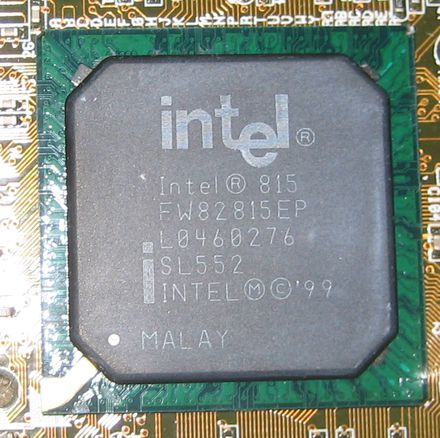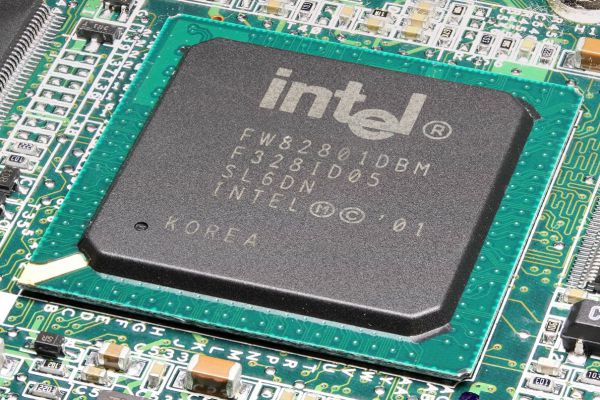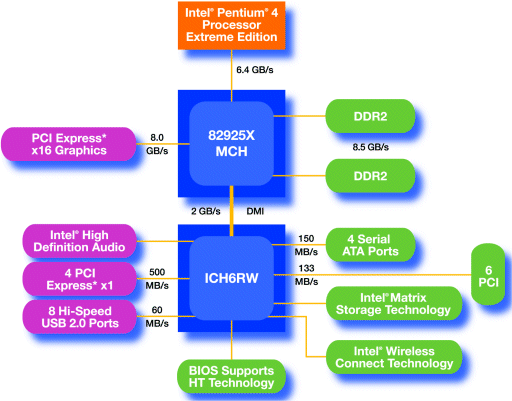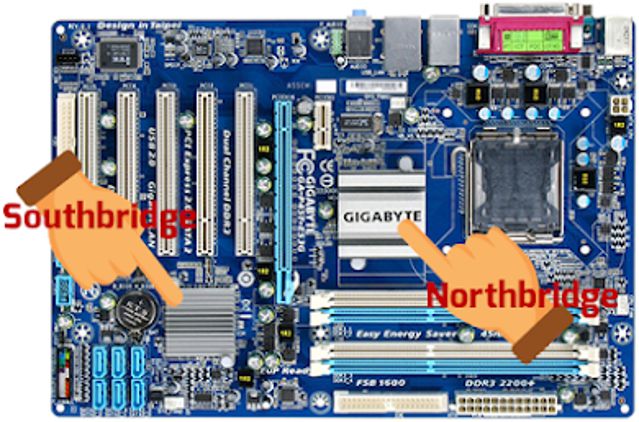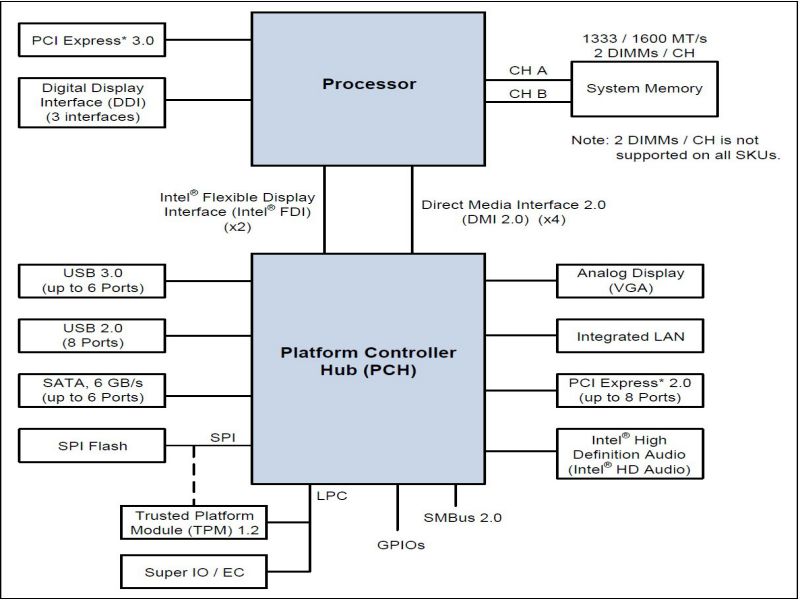The chipset is a critical component in a computer that connects all the other components on the mainboard. It is responsible for managing data flow between the CPU, RAM, storage, and other peripherals. There are typically two types of chipsets on the mainboards: the Northbridge chipset and the Southbridge chipset.
1. Northbridge chipset
It is also called Memory Controller Hub (MCH).
Northbridge chipset is responsible for communication between high-speed components such as CPU, RAM, AGP, PCI Express, and the Southbridge chipset. The Northbridge chipset can integrate a video controller program, called Graphics and Memory Controller Hub (GMCH).
2. Southbridge chipset
It is also known as Input Output Controller Hub (ICH).
This chipset manages and communicates with components that have slow processing speeds, such as PCI slots, USB ports, IC Sound, LAN IC, BIOS ROM, and IC SIO. The IC SIO usually manages the keyboard, mouse, FDD, COM port, and other devices. The Southbridge chipset receives data from these devices and sends it to the Northbridge chipset.
3. Location of chipsets on the mainboard
The Northbridge chipset is typically found near the CPU and RAM, while the Southbridge chipset is located near the HDD, SIO, and ports connecting peripheral devices.
Note: Not all motherboards have separate Northbridge and Southbridge chipsets. With newer CPU series, the Northbridge chipset can be integrated into the CPU. In other cases, these chipsets are integrated into the CPU.
Motherboards with only the Southbridge chipset typically refer to the chipset as the Platform Controller Hub (PCH). Intel introduced this type of chipset in 2009.
The Platform Controller Hub (PCH) is a chipset component in modern Intel-based computers that manages the communication between the CPU, memory, and other peripherals. It is responsible for providing connectivity for peripherals such as SATA, USB, Ethernet, and audio devices. The PCH also includes the firmware hub (SPI flash) and the Intel Management Engine (ME), which is a microcontroller that controls system power, security, and remote management.
